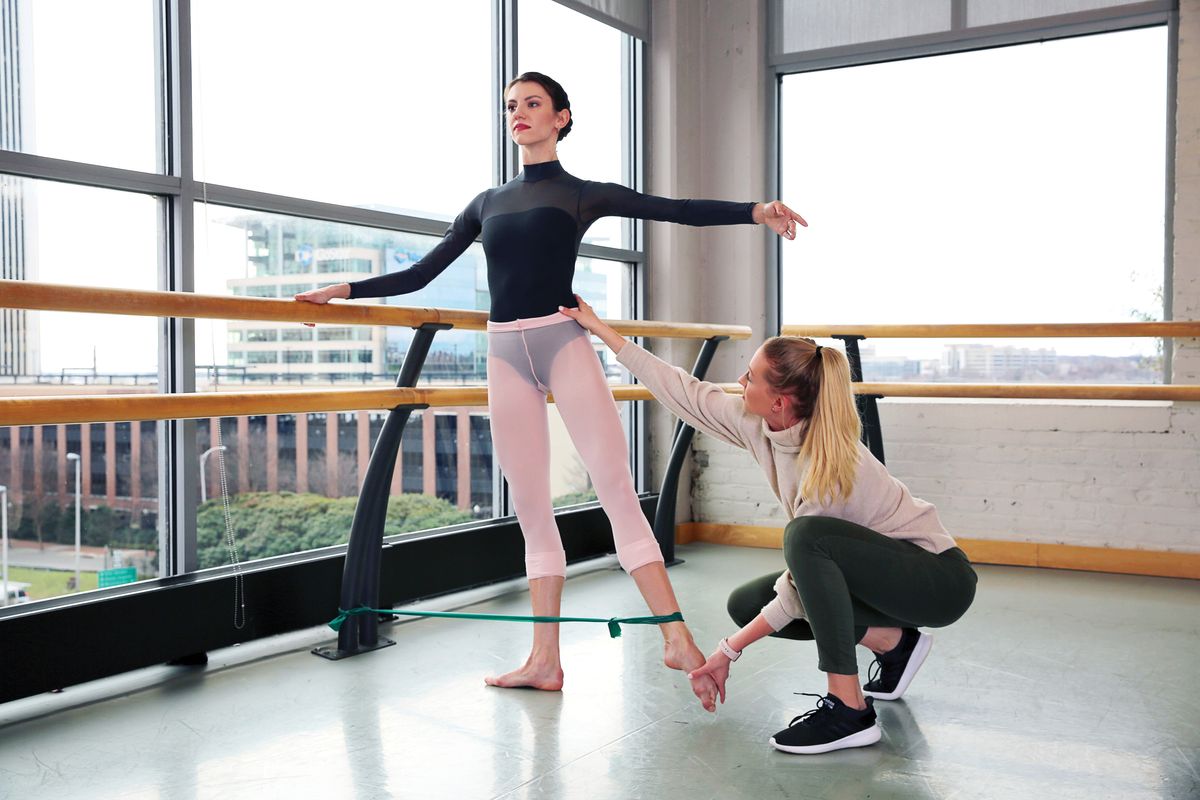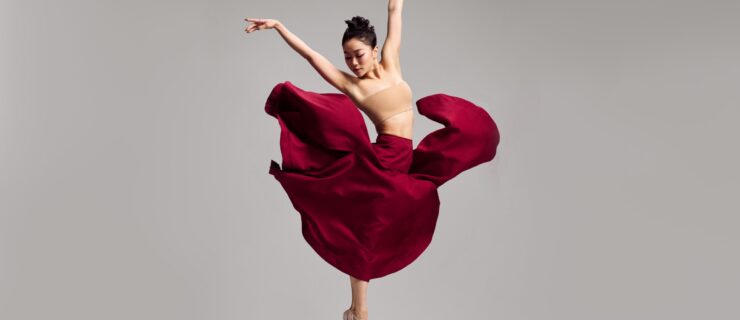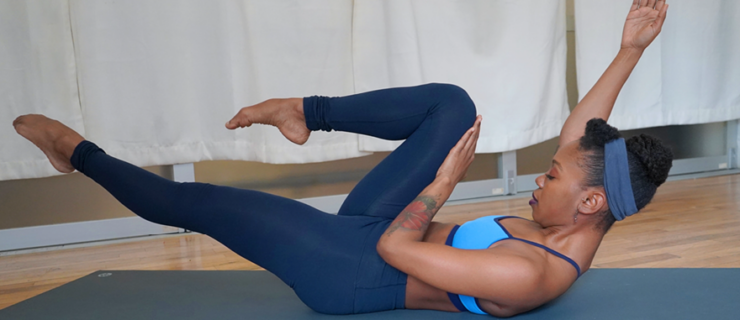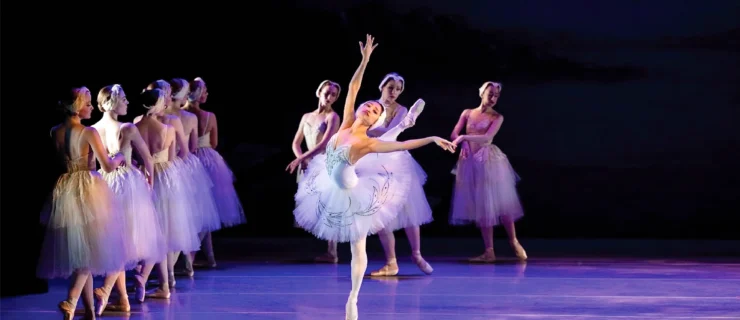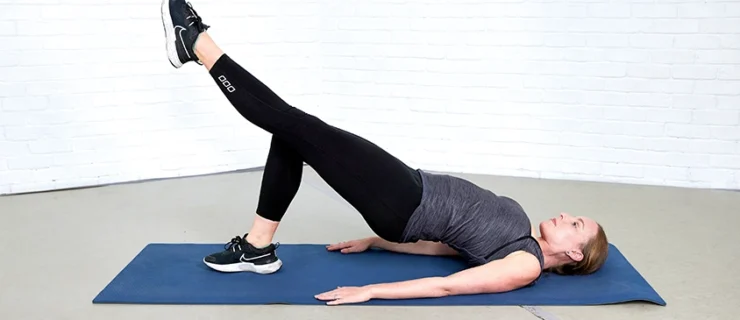Try These 3 Exercises for Crisper, Quicker Petit Allégro
A well-executed petit allégro combination—full of intricate jumps, crisp transitions and swift directional changes—is a thing of beauty. Ideally, you’re able to sail through a sequence without going the wrong way or getting your legs tangled. But that’s not always the case.
According to Darby Hooton, an athletic trainer at Physical Therapy Solutions who works with Richmond Ballet dancers, if your petit allégro is less than polished, you might not be using your fast-twitch muscle fibers as efficiently as you could. But targeted cross-training can strengthen these fibers so they fire more effectively and you won’t fatigue as quickly.
Fast-Twitch Versus Slow-Twitch Fibers
“Ballet is more of an endurance-based art, where you’re holding sustained movements for long periods of time,” says Hooton. Because of these demands, ballet dancers tend to have more-developed Type I, or slow twitch, muscle fibers. These aid in controlled sequences of long durations. Petit allégro, on the other hand, relies on your Type II, or fast-twitch, muscle fibers. While they produce a greater force, helping you perform quick bursts of movement, fast-twitch fibers tire faster.
The Ground Rules
If you’d like to achieve more speed and sharpness in your petit allégro, focus on these concepts:
- Cross-train. Hooton urges dancers to try related exercises outside of dance. (See her recommendations at right.) “It forces your body to adapt to a new neuromuscular pattern,” she says. “Dance can become such a muscle-memory–based art. Sometimes stepping out of it and getting your brain to understand different motor patterns helps you become more effective when you try to use it again in your dancing.”
- Fast pace and low repetitions. The key to practicing the recruitment of your fast-twitch fibers, says Hooton, is doing exercises quickly for a low number of reps. “You want to mimic what you are trying to achieve, and that’s exactly what petit allégro is,” she says.
- Directions matter. While height is an element of petit allégro, it’s certainly not the main thrust. Choose exercises that emphasize moving forward, backward, sideways and diagonally, instead of up and down.
- Don’t wait until the end of the day. “You’re typically more prone for injury the longer that you’ve spent in rehearsals,” says Hooton, who recommends doing this conditioning midday after you’ve taken class, so you’re fully warm but not overly exhausted.
Try This: Frappé With TheraBand

You’ll need:
- TheraBand
- Riser or a BOSU ball
- Tape to mark a pattern on the floor
Goal:
Keep your legs under you as you jump, so you don’t lose your footing.
- Tie a TheraBand in a loop around your left ankle and something sturdy, like the leg of a barre (as shown), and stand barefoot in first position.
- Standing on your right leg, do 10 frappés to the front, working against the slight resistance of the band. If needed, hold on to the barre for balance. “Move as quickly as you can. It’s all about the stability on the right side,” says Hooton. Continue with 10 frappés to the side and 10 to the back, changing your body direction so that the frappé is always pulling in the direction that creates resistance. Do 3 sets before switching to the left leg.
This translates to combinations with a string of jumps, like glissade, jeté, assemblé, where your legs are moving away from you, but must constantly come back under you, says Hooton.
Try This: Riser or BOSU Ball Step-Ups
 Richmond Ballet’s Izabella Tokev. Sarah Ferguson, Courtesy Richmond Ballet
Richmond Ballet’s Izabella Tokev. Sarah Ferguson, Courtesy Richmond BalletGoal:
Keep up with the pace of a quick combination.
- Find a solid step or riser, either at the gym or a stairwell landing. Wearing sneakers, step up in parallel with your left foot, up with your right foot, down with the left and down with the right. Complete this pattern as quickly as possible. (For a more advanced version, this can be done with a BOSU ball placed flat-side down.)
- Repeat the pattern for 15 seconds. Complete 3 sets, then switch so you start on your right leg. Over time, you can build up to 30-second sets.
Though the drill sounds simple, “it takes a little bit of practice for some dancers to coordinate their feet moving the way that their brain wants them to. That’s where the cross-training really becomes effective,” says Hooton, noting that she’s seen this exercise help improve dancers’ efficiency in petit allégro.
Try This: Directional Single-Legged Hops
 Richmond Ballet’s Izabella Tokev. Sarah Ferguson, Courtesy Richmond Ballet
Richmond Ballet’s Izabella Tokev. Sarah Ferguson, Courtesy Richmond BalletGoal:
Master sequences with quick directional changes.
- Place two long strips of tape on the floor in a cross shape.
- Wearing sneakers, quickly hop on your left leg in parallel between the different quadrants on the floor. Practice jumping forward and backward over the tape, side to side, and diagonally in each direction. (Jumping high is not the goal.) Continue hopping for 3 sets of 15 seconds before you switch legs. Over time, you can build up to 30-second sets.
Hooton suggests pairing up with another dancer who can call out a different direction for you to jump in as a surprise every few reps. Why? Because mistakes are bound to happen during petit allégro. “You’ll have moments where you’re trying to correct something,” she says, and adding an element of confusion to the drill can teach your muscles to switch course quickly.
